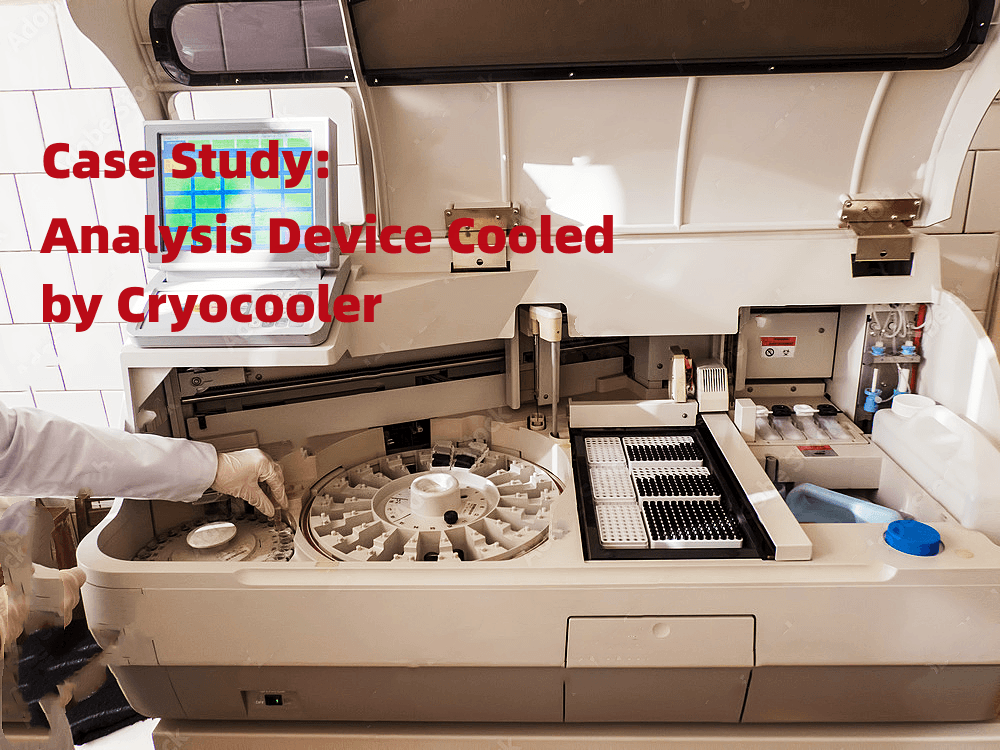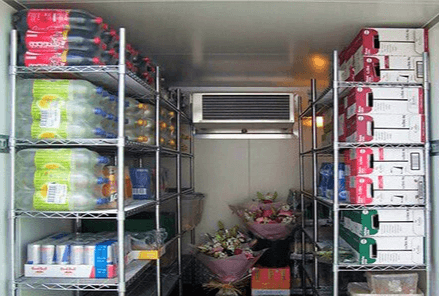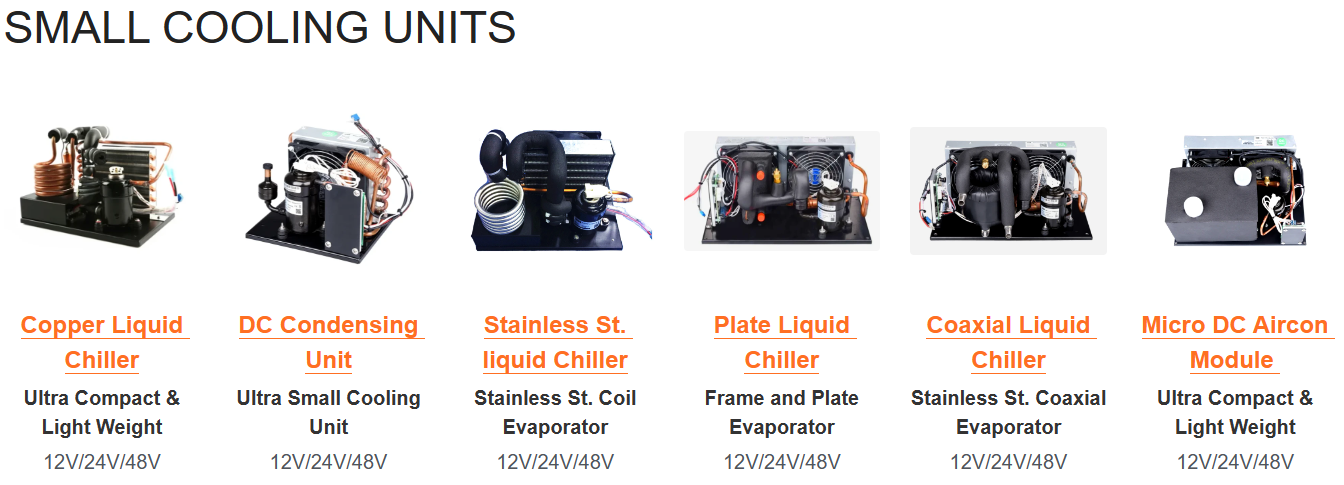Introduction

"RIGID is a miniature refrigerated compressor innovation leader in China. We keep looking for novel solutions in compact and portable cooling systems. We capture new technologies in mobile and compact cooling systems."
In the bustling world of commercial kitchens and food storage, walk-in coolers play a crucial role in keeping products fresh and safe. Understanding your walk-in cooler needs is essential for any business relying on effective refrigeration solutions. Whether you’re facing issues with your walk-in fridge or simply looking to upgrade to a more efficient model, knowing when to opt for repair versus replacement can save you time and money.
Understanding Walk-In Cooler Needs
Assessing these needs involves evaluating factors such as inventory volume, frequency of use, and energy efficiency goals. By understanding what your operation requires, you can make informed decisions about maintenance, repair, or even investing in a new commercial freezer.
Factors Influencing Repair vs. Replacement
When faced with a malfunctioning walk-in cooler, deciding between repair and replacement isn’t always straightforward. Factors such as age of the unit, frequency of repairs needed, energy consumption rates, and overall performance will influence this critical decision-making process. Often, businesses find that while walk-in cooler repair may seem cost-effective initially, long-term benefits could lie in replacing outdated models with modern solutions that offer improved efficiency.
Key Benefits of Commercial Refrigeration
Investing in reliable commercial refrigeration systems not only ensures product safety but also enhances operational efficiency. Modern walk-in coolers come equipped with advanced technology that promotes energy savings while maintaining optimal temperatures for stored goods. Additionally, businesses can enjoy peace of mind knowing they comply with health standards and regulations while minimizing waste through better temperature control.
Assessing the Condition of Your Cooler

Signs That Your Walk-In Cooler Needs Repair
One of the first signs that your walk-in cooler requires repair is an inconsistent temperature. If you notice that food items are not staying cold enough or if ice forms in unusual places, it’s time to investigate further. Additionally, strange noises coming from your cooler fridge can signal mechanical issues—don't ignore those ominous hums or rattles!
Another telltale sign is increased energy bills; if your commercial freezer is working overtime due to inefficiencies, it may be on its last legs. Keep an eye out for condensation on walls or floors; excessive moisture often indicates a refrigerant leak or improper sealing. Lastly, any unpleasant odors emanating from your cooler refrigeration system should raise immediate red flags about potential spoilage or malfunction.
Common Issues in Walk-In Coolers
Walk-in coolers can experience a variety of common issues that affect their performance and longevity. One frequent culprit is evaporator coil frost buildup, which can restrict airflow and lead to inefficient cooling—definitely not ideal for keeping perishables fresh! Another issue arises from faulty door seals; if they’re damaged, warm air sneaks in while cold air escapes, causing unnecessary strain on the unit.
Additionally, compressor problems are among the most serious concerns for any commercial refrigeration system. If the compressor isn't functioning properly, it can lead to complete failure of the cooling cycle—yikes! Regular maintenance checks can help catch these issues early before they escalate into more expensive repairs.
When to Call a Refrigeration Repair Expert
Knowing when to call a refrigeration repair expert can save you both time and money in the long run. If you've noticed persistent temperature fluctuations despite adjusting settings or routine maintenance efforts haven't resolved ongoing issues, it's best to seek professional help immediately. Experts have specialized tools and knowledge that allow them to diagnose problems accurately and efficiently—after all, nobody wants a spoiled stock!
If you're dealing with refrigerant leaks or electrical malfunctions within your walk-in cooler system, don’t hesitate to reach out for assistance; these situations require trained professionals who understand safety protocols and regulations related to commercial refrigeration systems. Finally, if repairs start piling up frequently or costs begin outweighing potential benefits of keeping an older unit running smoothly—it's time for some serious decision-making regarding whether repair or replacement makes more sense.
Cost Analysis: Repair vs. Replacement

Evaluating Repair Costs for Walk-In Coolers
Repair costs for walk-in coolers can be influenced by various factors, including the nature of the issue and the parts that need servicing or replacing. Common repairs often involve refrigeration components, electrical issues, or insulation problems in a walk-in fridge, each carrying different price tags. Additionally, if your unit is older and requires frequent repairs, it may be worth considering whether investing in a new commercial refrigeration system could save you money in the long run.
When assessing repair costs specifically for cooler refrigeration systems, it's essential to obtain quotes from multiple refrigeration repair professionals to ensure you're getting a fair deal. Keep in mind that while some repairs might seem inexpensive at first glance, recurring issues can add up quickly over time. Ultimately, investing in regular maintenance can help prevent costly breakdowns and extend your cooler's lifespan.
Understanding Replacement Expenses
Replacement expenses for a walk-in cooler can be substantial but are often justified when weighed against ongoing repair costs and energy inefficiencies of older models. The initial investment may seem daunting; however, modern commercial freezers and coolers are designed with advanced technology that enhances energy efficiency and reduces operational costs over time. When calculating replacement expenses, consider not just purchase price but also installation fees and potential downtime during transition.
Moreover, upgrading to a new unit means you’ll benefit from warranties that cover many aspects of operation for several years—something older models typically lack as they age past their prime. It’s also worth noting that newer units comply with current health regulations more effectively than outdated systems might do; thus avoiding potential fines or compliance issues down the road adds another layer of value to replacement considerations.
Long-Term Savings with Efficient Solutions
Investing in energy-efficient solutions like modern walk-in coolers is not just about upfront costs; it's about realizing significant long-term savings through reduced energy bills and lower maintenance requirements. Newer models often come equipped with advanced insulation materials and energy-saving compressors designed to minimize electricity consumption while maximizing cooling performance—resulting in a win-win situation for both your wallet and the environment.
By opting for efficient commercial refrigeration options today, businesses can expect returns on investment through decreased utility bills alongside fewer service calls related to wear-and-tear on older equipment like traditional walk-in fridges or freezers. Furthermore, many utility companies offer rebates or incentives when businesses upgrade their cooling systems—making this transition even more financially appealing!
In conclusion, taking into account all these factors will guide you toward making an educated choice between repairing your existing walk-in cooler or investing in a new one tailored to meet modern demands.
The Role of Energy Efficiency

Energy efficiency is no longer just a buzzword; it's a necessity in the world of commercial refrigeration. For businesses relying on walk-in coolers and freezers, understanding energy-efficient options can lead to significant cost savings and a smaller environmental footprint. In this section, we’ll explore how energy-efficient walk-in coolers can revolutionize your refrigeration needs.
Energy-Efficient Walk-In Coolers Explained
Energy-efficient walk-in coolers are designed with advanced technologies that minimize energy consumption while maximizing performance. These units often feature enhanced insulation, variable speed compressors, and smart temperature controls that adapt to changing conditions. By investing in such cooler refrigeration solutions, business owners can effectively reduce their operational costs while ensuring optimal storage conditions for perishable goods.
Moreover, energy-efficient models are often equipped with LED lighting and high-efficiency evaporators that not only save electricity but also improve visibility inside the cooler walk. This means you can easily find what you need without wasting time or resources. Ultimately, these innovations make energy-efficient walk-in fridges a smart choice for any commercial establishment looking to cut down on overhead expenses.
Benefits of Upgrading to Modern Units
Upgrading to modern units offers numerous benefits beyond just energy savings; it enhances overall operational efficiency as well. Newer models of commercial refrigeration systems come with improved technology that provides better temperature control and reliability compared to older units requiring frequent walk-in cooler repair. This results in fewer interruptions in service and reduced spoilage of food items stored within.
Furthermore, modern units often come with warranties that cover potential issues, providing peace of mind against unexpected breakdowns typically associated with outdated equipment. By opting for an upgrade now, businesses can avoid costly repairs down the line while enjoying enhanced features like remote monitoring capabilities that keep track of performance metrics in real-time—an invaluable asset for busy operators managing multiple locations.
RIGID Solutions for Cooler Refrigeration Needs
Their range includes high-performance walk-in coolers and freezers built with durability and efficiency at their core—perfect for those seeking reliable options without breaking the bank on repairs or replacements later on. With RIGID’s commitment to quality craftsmanship and customer satisfaction, businesses can rest easy knowing they’re investing in equipment engineered for longevity.
Additionally, RIGID provides expert support services including installation guidance and maintenance tips aimed at extending the lifespan of your unit while minimizing the likelihood of needing refrigeration repair down the road. Their focus on energy efficiency means you’ll not only save money but also contribute positively towards environmental sustainability efforts—a win-win situation! So why settle for less when you have RIGID solutions at your fingertips?
Regulatory Compliance and Safety

Navigating Health and Safety Standards
Understanding the myriad of health and safety standards that govern commercial refrigeration can be overwhelming, but it’s essential for any business using walk-in fridges or coolers. Local health departments often set regulations that include temperature control, sanitation practices, and equipment maintenance schedules. Staying informed about these requirements can help you avoid costly walk-in cooler repairs due to non-compliance issues.
Importance of Compliance in Commercial Refrigeration
Compliance with health regulations not only safeguards your customers but also protects your business from hefty fines or even shutdowns. When a walk-in cooler malfunctions due to neglecting compliance measures, you may face not just repair costs but also potential loss of inventory—an expensive hit for any commercial enterprise. Regular inspections and adherence to safety protocols ensure that your refrigeration systems operate smoothly while keeping you on the right side of the law.
Ensuring Safe Operation for Your Walk-In Fridge
To guarantee safe operation in your walk-in fridge or freezer, routine maintenance is crucial alongside compliance checks. This includes monitoring temperature settings, checking seals on doors, and ensuring proper ventilation within the unit—common issues that can lead to significant problems if left unattended. By investing in professional refrigeration repair services when needed, you can extend the lifespan of your cooler while maintaining a safe environment for both employees and customers.
Making the Right Decision

Deciding whether to repair or replace your walk-in cooler can feel like navigating a maze. With various factors at play, it’s crucial to weigh your options carefully. Understanding the nuances of commercial refrigeration will help you make an informed choice that suits both your budget and operational needs.
Factors to Consider Before Choosing
When contemplating walk-in cooler repair versus replacement, several key factors should influence your decision. First, assess the age of your current unit; if it's nearing the end of its lifespan, investing in a new model may be more cost-effective in the long run. Additionally, consider how often you’ve had to call for refrigeration repair—frequent issues could signal that it's time for a change rather than another fix.
Another important factor is energy efficiency. Older models tend to consume more energy, leading to higher utility bills over time. Upgrading to a modern walk-in fridge can significantly reduce operational costs and enhance performance.
Lastly, evaluate how critical the cooler is to your business operations. If downtime could lead to lost revenue or spoilage of inventory in your commercial freezer, opting for replacement might minimize disruptions and ensure you maintain compliance with safety standards.
Expert Tips for a Smooth Transition
Transitioning from an old unit to a new one can be daunting, but with proper planning, it doesn’t have to be chaotic! First and foremost, create a timeline that outlines each step of the process—from assessing current conditions through installation of the new cooler refrigeration system. This will help you stay organized and minimize downtime during the transition.
Next, involve qualified professionals early on in the decision-making process; their insights on walk-in cooler repair options versus replacements can provide clarity on what’s best for your specific situation. They can also assist with ensuring compliance with health and safety standards during installation.
Lastly, prepare staff for changes by providing training on any new features or maintenance requirements associated with upgraded equipment. This proactive approach will ensure everyone is on board and ready when it’s time to say goodbye to your old walk-in cooler!
Leveraging Customized Solutions with RIGID
When considering replacement options for commercial refrigeration needs, look no further than RIGID solutions tailored specifically for businesses like yours! Their customizable designs allow you to choose features that align perfectly with your operational demands while ensuring maximum efficiency in terms of energy consumption and performance.
RIGID also offers expert guidance throughout the entire process—from selecting components suited for specific environments (like coolers or freezers) through installation support that guarantees optimal functionality right from day one. Their commitment ensures that any concerns regarding walk-in fridge repairs are addressed before they become issues down the line.
Finally, remember that investing in customized solutions not only enhances efficiency but also extends equipment lifespan significantly compared to standard models available elsewhere—making it an intelligent choice when considering future-proofing investments in commercial refrigeration!
Conclusion

In the world of commercial refrigeration, decisions about walk-in cooler repair or replacement can feel overwhelming. However, understanding the signs that your walk-in fridge needs attention and weighing repair costs against replacement expenses can help you make informed choices. Remember, investing in a reliable cooler refrigeration solution pays off in the long run.
Key Takeaways on Repair and Replacement
When it comes to walk-in cooler repair versus replacement, there are several key factors to consider. First, assess the age and condition of your unit; older models often incur higher maintenance costs compared to newer commercial refrigeration systems. Second, evaluate how frequently you encounter issues—if repairs are becoming routine, it may be time to invest in a new walk-in cooler.
Additionally, energy efficiency plays a significant role in this decision-making process. Modern commercial freezers and coolers are designed with advanced technology that not only reduces energy consumption but also enhances performance reliability. Ultimately, it's essential to balance immediate costs with potential long-term savings when deciding between repairing or replacing your cooler.
The Future of Commercial Refrigeration
As we look ahead, the landscape of commercial refrigeration is evolving rapidly due to advancements in technology and sustainability practices. Energy-efficient units are becoming more commonplace as businesses strive for greener operations while maintaining optimal performance in their walk-in coolers and fridges. Furthermore, innovations such as smart monitoring systems will help streamline maintenance processes by providing real-time data on unit performance.
The push towards environmentally friendly solutions means that investing in modern refrigeration equipment is no longer just about compliance but also about corporate responsibility. Companies that prioritize sustainability will likely see improved customer loyalty and brand reputation as consumers become more conscious of environmental impact. As we move forward into this new era of commercial refrigeration, embracing these changes will be crucial for business success.
Final Thoughts on Budget-Friendly Solutions
Navigating the world of walk-in cooler repair and replacement doesn’t have to break the bank if you approach it strategically. By conducting regular assessments and staying proactive with maintenance routines, you can extend the life of your current equipment while avoiding costly emergencies down the line. Additionally, exploring customized solutions tailored to your specific needs can provide a budget-friendly path forward without sacrificing quality or efficiency.
Ultimately, whether you're dealing with a stubborn leak or contemplating an upgrade to a state-of-the-art commercial freezer system, remember that informed decisions lead to better outcomes for your business's bottom line. Prioritizing energy efficiency and regulatory compliance not only safeguards your investment but also positions you well for future growth within an ever-evolving industry landscape.